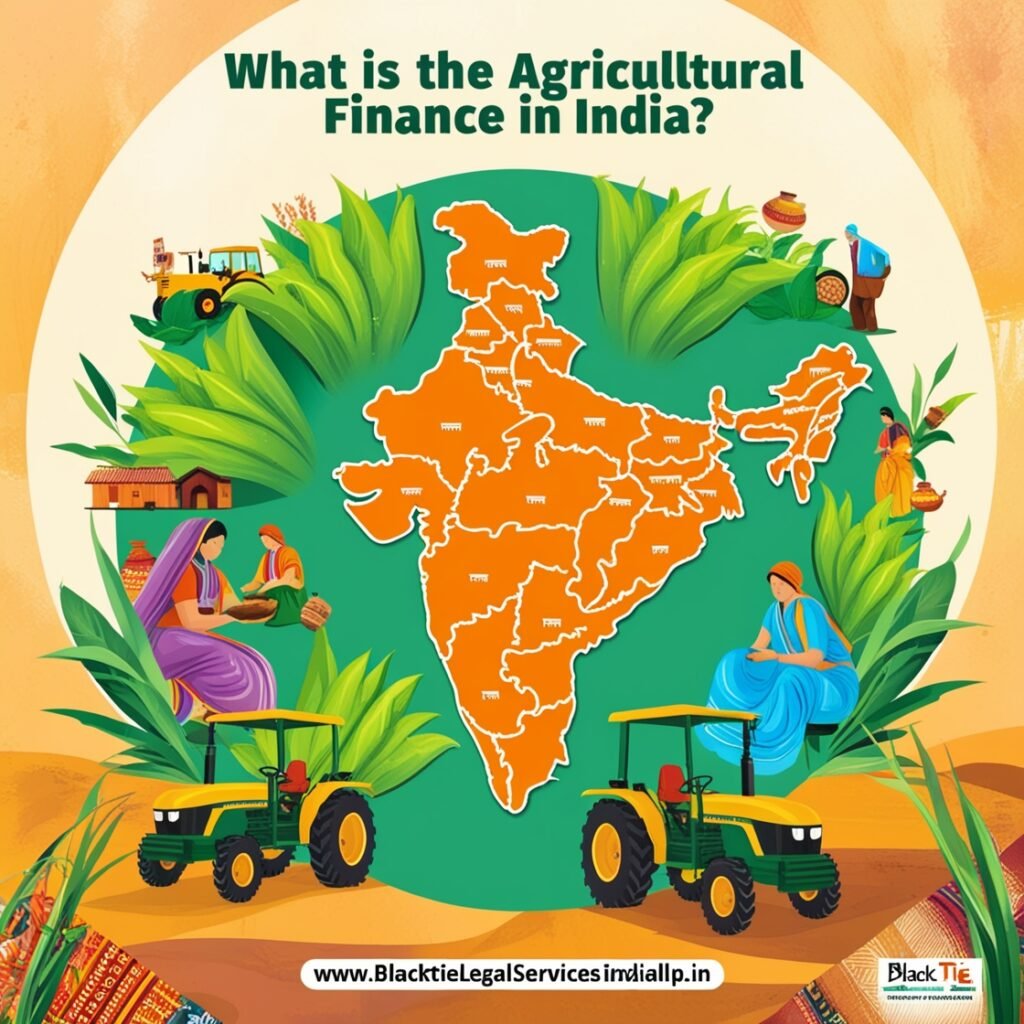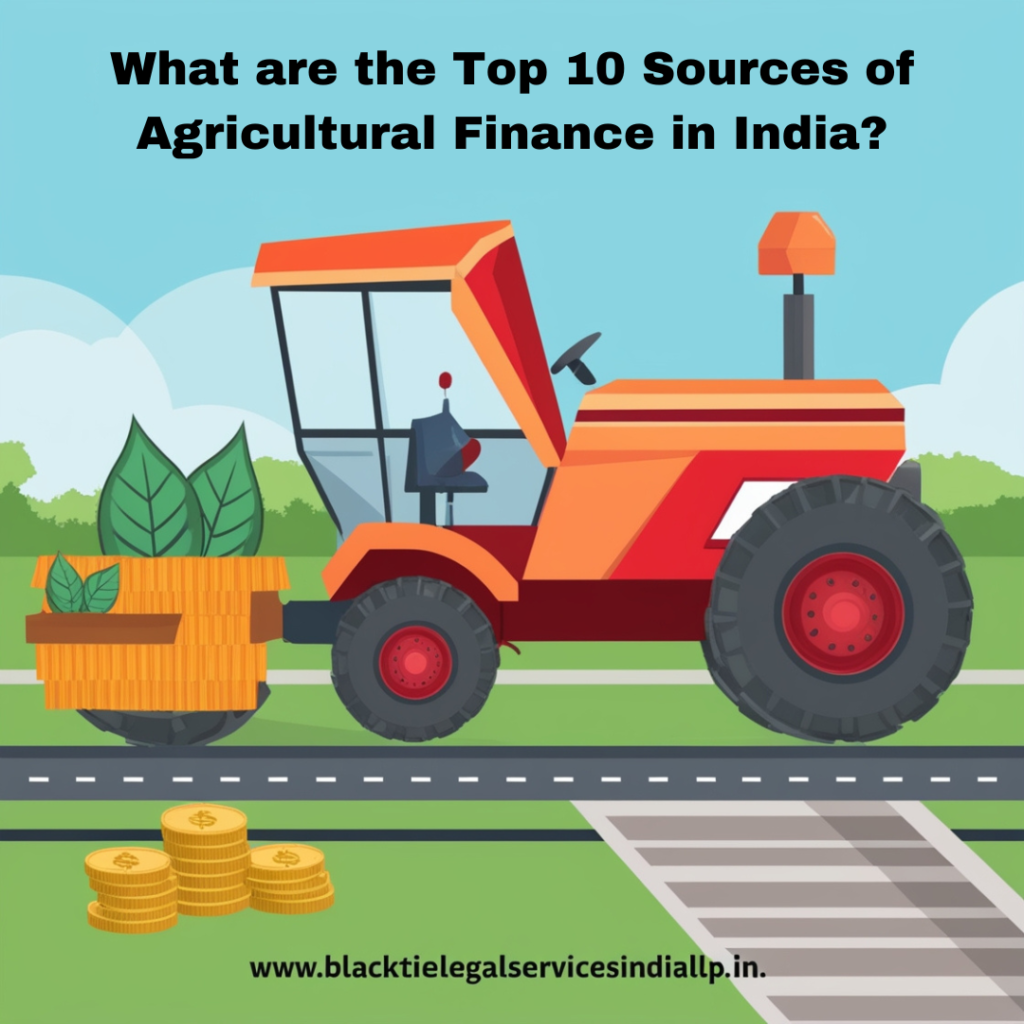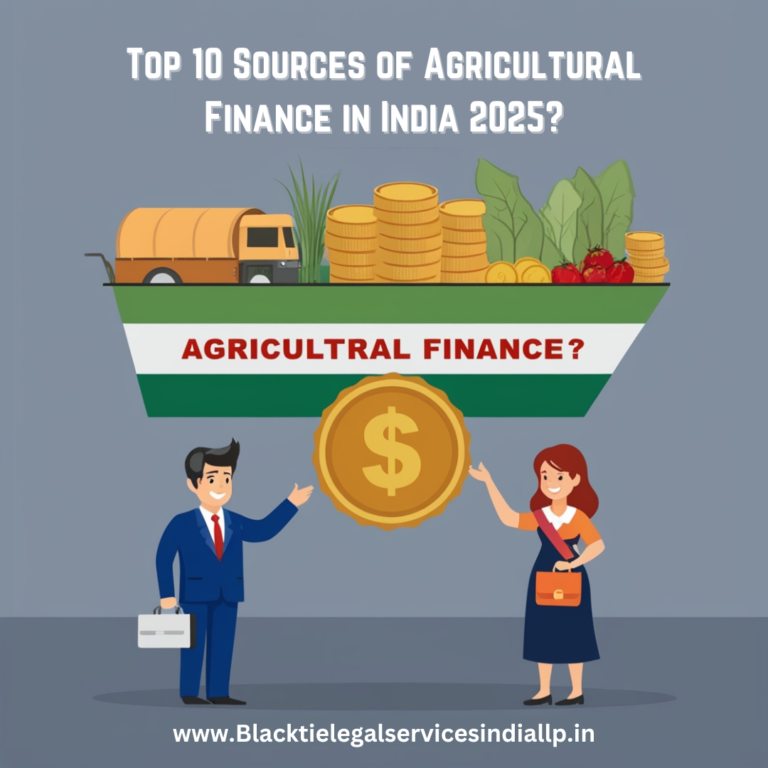In this blog post, we discuss the top 10 sources of agricultural finance through which these financiers help to meet the needs of farmers and, indeed, help in the development of farming across the country. To help the agriculture sector grow and become sustainable, agricultural finance in India has become essential. Since the agriculture sector provides the main source of livelihood for a large number of people, the availability and affordability of credit at the right time are crucial to increase efficiency, adopt innovative practices, and mitigate risks. The sources through which agricultural finance is available include Formal sources and Informal sources include;
- What is the Agricultural Finance in India?
- What are the Top 10 Sources of Agricultural Finance in India?
- 1. Commercial Bank
- 2. Cooperative Societies
- 3. Regional Rural Banks
- 4. Government
- 5. Kisan Credit Card
- 6. Land Development Banks
- 7. Merchants and Traders
- 8. Micro Finance
- 9. Non-Banking Financial Company
- 10. Sources of Agricultural Credit
- Conclusion
- FAQs
What is the Agricultural Finance in India?
Agricultural finance in India means financing provided to agriculture for its continued proper growth, maintaining food security and cord requirements, and for the upliftment of farmers in rural India. It includes a number of risk transfer products, institutions, and mechanisms aimed at addressing the diverse credit and investment needs of people directly engaged in agriculture and allied sectors.
1. Sources
- Institutional: In terms of organizations, commercial banks, regional rural banks (RRBs), cooperative banks, and NABARD are important.
- Non-institutional: Moneylenders, traders, and relatives.
- Government Programmes: Considering its various schemes, the names are – PM-KISAN Kisan Credit Card (KCC).
2. Types
- Short Term: For seeds, fertilizers, etc.
- Medium Term: For equipment and livestock.
- Long Term: Especially in aspects of land development and irrigation.
3. Government Initiatives
- Credit subsidy and crop insurance programs.
- Subsidy Sector: Role of NABARD in financing rural infrastructure and credit policies.
4. Challenges
- Legalization of interest rates on loans for underemployed farmers.
- High-interest informal loans are adopted to reduce the debt burden arising from high-interest formal sources.
- Vulnerabilities arising from crop losses and price fluctuations.
5. Digital transformation
- Mobile money solutions, fintech, and other services like e-NAM improve financial inclusion.

What are the Top 10 Sources of Agricultural Finance in India?
1. Commercial Bank
2. Cooperative Societies
3. Regional Rural Banks
4. Government
5. Kisan Credit Card
6. Land Development Banks
7. Merchants and Traders
8. Micro Finance
9. Non-Banking Financial Company
10. Sources of Agricultural Credit
To Read Other Articles Click Here

1. Commercial Bank
Commercial banks are considered to be the most prominent institutional source of agricultural finance in India. They provide both working capital and fixed loans, which help increase both production and returns in agricultural commerce.
1. Kisan Credit Card (KCC): Loans through government-aided policies and subsidies.
2. Priority Sector Lending: RBI was mandated to direct its credit resources to agriculture.
3. Affordable Loans: Lower interest rates than most informal sources of credit.
4. Digital Services: Mobile Banking Mobile Office for easy management of banking systems.
2. Cooperative Societies
Cooperative societies are member-based organizations that are very important in extending cheap and easily accessible credit facilities to the farmers, mostly small and marginal farmers. These organizations operate on the concept of reciprocity and are expected to help pull up rural people by assisting them to stand on their own.
1. Member-Owned: Run by and for the farmers and rural workers who are members.
2. Affordable Credit: Based on previous studies, what other ways should Microfinance institutions try to improve?
3. Wide Reach: Ensure is made towards the rural & semi-urban market, which still finds it hard to get ‘formal’ banking services.
4. Multi-Purpose Operations: Finance crop production, equipment purchase for use in farming, marketing requirements, and other activities within this area of business.
3. Regional Rural Banks
Regional Rural Banks (RRBs) are those institutions that have been developed mainly with the objective of extending credit and other financial facilities to the rural sector, particularly to small Farmers, Agricultural workers, artisans, and Entrepreneurs. It has a vital function in the development of rural areas and access to finance.
1. Ownership: It is established as a partnership firm with contributions from the Central Government, State Government, and a Sponsor Bank in proportions of 50%, 15%, and 35%, respectively.
2. Objectives: Make funds and credit available at reasonable rates for agricultural needs as well as small-scale industries and rural development.
3. Products: These consist of farm credit loans, savings, and MSME loans.
4. Regulation: NABARD not only controls the RRBs but also refinances them.
4. Government
1. PM-KISAN: Payments to farmers in the form of revenue.
2. Kisan Credit Card (KCC): Extremely cheap loans for agricultural work at attractive interest rates.
3. Interest Subsidy Scheme: Subsidy on loans being given to farmers.
4. NABARD: Provides funds to rural banks and agricultural sections.
5. Rural Infrastructure Development Fund (RIDF): Investment of funds for rural infrastructure projects, Schumer said.
6. Crop Insurance Schemes: Pet policies for crop loss in natural disasters.
7. Agri-Infrastructure Fund: Classified grants for the development of agricultural facilities and structures.
8. National Rural Livelihoods Mission (NRLM): Financial services for rural women and farmers.
9. State Government Schemes: State loan facilities and subsidies to farmers.
10. Subsidy on Inputs: Subsidy on seeds, fertilizers, and machinery used in farming.
5. Kisan Credit Card
KCC, also known as Kisan Credit Card Yojana, is sponsored by the government so that farmers always have access to credit for their farming needs. This program was launched in 1998 with the intention of simplifying the process of getting loans for agricultural purposes and reducing borrowing from moneylenders.
1. Eligibility: The scheme is available to all farmers, including small and marginal farmers and landless agricultural labor workers.
2. Loan amount: ₹10,000 to ₹3,00,000, depending on the size of the land and consumption of crops.
3. Interest Rate: The normal range of interest rate is 7% to 9%, but if the interest is subsidized then the actual rate is much lower.
4. Repayment: Dependent on and linked to the oscillating rhythm of crop yields.
5. Benefits: They are talking about cheap money, attractive rates and terms, insurance opportunities, and overdrafts.
6. Digital Access: The convenience here is that all applications can be made online.
6. Land Development Banks
LDBs are select financial institutions that are primarily concerned with long-term loan financing for agricultural land development and improvement. The primary objective of these organizations is to help landowners and farmers arrange funds for land-related development activities such as the reclamation of wastelands, irrigation, drainage, and other work that helps increase the productivity of land for agricultural use.
1. Long-term loans: Often involve long-term repayment periods of 10-20 years in case of land development projects.
2. Low interest rates: They should offer more healthy and affordable rates that are relatively lower than commercial banks.
3. Government assistance: Usually with government grants for rural development.
4. Repayment flexibility: To link with the cycles of farming activities.
7. Merchants and Traders
The picture above shows that traders have an important role in India’s agricultural finance system, but for the most part, they rely on the informal credit system. Here is how they contribute:
1. Supply chain financing: They provide cash precursors for crops and all kinds of agricultural products for both small and large-scale farmers.
2. Informal credit: Traders provide credit facilities to farmers, and this credit is usually expensive.
3. Input financing: They provide seeds, fertilizers, and pesticides on credit facilities.
4. Market linkages: Traders intermediate farmers in markets and optimize markets with price effects.
5. Price risk mitigation: They can provide a fixed price for a particular contract to reduce price fluctuations of services.
6. Local credit: Employers are usually the first choice for quick money among farmers.
8. Micro Finance
Microfinance can, therefore, be described as the act of providing small amounts of money in the form of cash or assets to individuals or groups in targeted rural or low-income areas who do not have access to formal banking services. Microfinance, in this context, aims to provide much-needed basic financial services to excluded groups in society, particularly small farmers, women, and people in rural areas.
1. Small loan amounts: These target small and poor people, as loans are not given to those who do not qualify.
2. No collateral: Based on trust or group guarantees in addition to holding collateral, as is common practice with similar loans.
3. Focus on rural areas: Some are primarily concerned with the provision of care in rural deprived areas.
4. Financial inclusion: The aim is to provide access to the financial system to economically deprived individuals.
9. Non-Banking Financial Company
A non-banking financial company (NBFC) is simply a financial firm that provides most if not all, of the services of a bank without the authority to act like a bank. It provides loans, manages assets, and makes investments but does not accept demand deposits from the public/customers. As such, NBFCs operate under the directions of the RBI; these are very important in absorbing the demand for credit in the economy, especially in sectors that are not fully financed by the banking systems, such as agriculture, microfinance, and other small business sectors.
1. Agricultural Credit: NBFCs provide loans for the acquisition of agricultural equipment, irrigation systems, and working capital.
2. Microcredit: Facilitating financial assistance to small farmers and in rural areas.
3. Financial Inclusion: Bridging the credit deficit in rural and other hard-to-reach areas.
10. Sources of Agricultural Credit
1. Aircraft – These are offered as working capital, machinery, and investments for the long term.
2. RRB_ Regional Rural Banks – Provide cheap funds for rural and agricultural financing.
3. Cooperative Banks – Provide short-term and long-term loans to small farmers.
4. NABARD – Provides other financial assistance to rural banks and agricultural development.
5. Non-Banking Financial Institutions and Companies – It provides inter-farmer loans for equipment like tractors and other agricultural implements and structures.
6. Micro-Finance Institutions/MFIs – Provide micro credit products to marginalized farmers and SHGs.
7. Kisan Credit Card (KCC) – Low cost/low interest rate credit facility assisted by the government.
8. Government subsidy scheme – means the government provides direct cash subsidies and low-interest loans.
9. Vendor Credit – Credit extension for small amounts that are to be repaid in cash at short notice.
10. Another emerging source – of credit is moneylenders and traders who charge high interest rates on borrowed money.
Conclusion
This research explores the sources of agricultural finance in India and their role in enhancing the growth and development of the farm sector. These sources, therefore, help farmers access credit for crops, implements, water needs, and other infrastructure required to increase production, thereby providing food security. Structured and cost-effective credit facilities are available from institutional agencies such as commercial banks, NABARD, and other cooperative banks. At the same time, the government has separately launched one or different schemes and programs specifically for small and other disadvantaged farmers. Nevertheless, the continued dynamism of financial products, including innovative solutions such as digital ones, can help address these shortcomings with limited access and high involvement of informal sources. Ultimately, the country needs a strong and diversified network of financing to support the sustainable development of agriculture and, essentially, rural areas in India.
FAQs
Q1. What are the sources of agricultural finance?
There are several modes of financing agriculture in India, including commercial banks, regional rural banks (RRBs), and cooperative banks that cater to farming needs. NABARD works in the rural credit areas, and NBFCs provide focused lending. Farmers are served by microfinance institutions (MFIs) and Kisan Credit Cards (KCC). Apart from banks, government schemes, self-help groups (SHGs), and informal sources such as moneylenders also help finance and support agricultural development in Indian states.
Q2. What are the main sources of agriculture?
The most important components of agriculture are land used to grow crops and graze animals, water for irrigation, labor for planting and harvesting, and capital to acquire tools, equipment, and facilities. Climate requirements affect the growth of crops, and technological factors make farming better suited to modern methods and equipment. Also, physical resources such as land and air to support farming. Together, these resources help determine agricultural productivity and sustainability.
Q3. Which bank provides agricultural finance?
A number of banks in India provide agricultural finance, including:
Commercial banks (e.g., State Bank of India, HDFC Bank, etc.)
Other commercial banks (regional rural banks) (e.g., Punjab Gramin Bank, Andhra Pradesh Gramin Vikas Bank)
State cooperative banks (e.g., Maharashtra State Cooperative Bank)
NABARD (National Bank for Agriculture and Rural Development) is a Credit refinancing organization that provides finance to state-sponsored regional rural banks and cooperatives.
Q4. What are the objectives of agricultural finance in India?
Lesson 4 Discuss the objectives of agricultural finance in India, such as increasing production in the agricultural sector, supporting the agriculture-based rural economy by providing credit for building infrastructure supporting agriculture-based small businesses, and financing food crops to ensure food security. It also seeks to advance sustainability in farming, cut down on farmers’ indebtedness through cheap loans, and increase credit for agriculture through the promotion of affordable loans for women, youth, and marginalized farmers.
Q5. What are the four types of agriculture?
Agriculture can be classified into four main types: These categories include subsistence agriculture, in which farmers grow crops for their consumption; commercial agriculture, in which farmers grow crops to sell; intensive agriculture, in which farmers grow high yields in a small area with the aid of advanced technologies; and extensive agriculture, in which crops are cultivated on large pieces of land, often in areas with low population density, with little use of technology.


Add a Comment